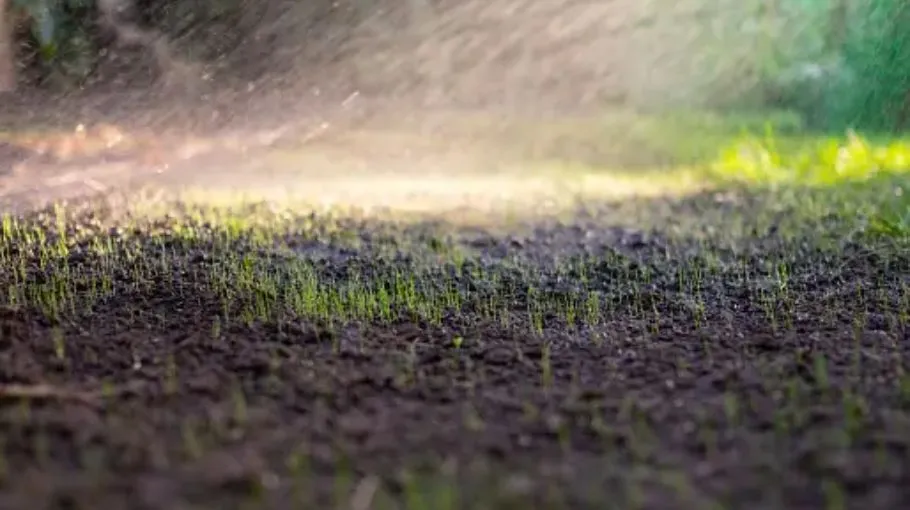Establishing a lush, green lawn starts with planting new grass seed, but one of the most crucial aspects of this process is understanding how often to water new grass seed. Proper watering is essential for seed germination and establishing healthy grass. In this article, we’ll explore the best practices for watering new grass seed, ensuring that your lawn thrives.
The Importance of Watering New Grass Seed
When you plant new grass seed, the seeds need moisture to germinate. Without adequate water, they may not sprout, or they could die before they establish strong roots. Watering new grass seed properly is vital because it affects the overall health and appearance of your lawn. Too little water can lead to dry, patchy areas, while too much can cause seed rot or fungal issues.

Understanding Grass Seed Germination
Before we dive into how often to water new grass seed, it’s important to understand the germination process. Grass seeds typically need:
- Moisture: Seeds absorb water and swell, breaking through their hard outer shell.
- Temperature: Most grass seeds germinate best in soil temperatures of 50°F to 65°F (10°C to 18°C).
- Light: Some seeds require light for germination, while others do not.
Once the seeds have absorbed enough moisture, they will begin to sprout, usually within 7 to 14 days, depending on the grass type and environmental conditions.
How Often to Water New Grass Seed
When it comes to watering new grass seed, the frequency depends on several factors, including the type of grass, soil conditions, and weather. Here are some general guidelines:
1. Initial Watering
Right after planting your grass seed, water the area thoroughly. This initial watering should soak the top 2 to 4 inches of soil, ensuring that the seeds are in contact with moist soil.
2. Daily Watering Schedule
For the first few weeks, especially during dry weather, you’ll want to water new grass seed daily. Aim for light watering in the morning to keep the soil consistently moist. Watering should be done for about 5 to 10 minutes, allowing moisture to penetrate without causing runoff.
3. Transitioning to Less Frequent Watering
As the seeds germinate and the grass begins to grow, you can gradually reduce the frequency of watering. After the first few weeks, you can switch to watering every other day.
4. Deep Watering Techniques
Once the grass has established itself (usually after about 3 to 4 weeks), you can transition to deeper, less frequent watering. This means watering every 3 to 4 days, but for longer durations, allowing the water to penetrate deeper into the soil. This encourages the roots to grow deeper, creating a more drought-resistant lawn.
Factors Influencing Watering Frequency
Several factors can influence how often to water new grass seed :
- Soil Type: Sandy soils drain quickly and may require more frequent watering, while clay soils retain moisture longer.
- Weather Conditions: Hot, dry, and windy days may necessitate more frequent watering, while cooler, humid days may require less.
- Grass Type: Some grass types are more drought-resistant than others. Research the specific needs of the grass seed you are planting.
Signs of Underwatering or Overwatering
Knowing how to recognize signs of underwatering or overwatering is essential:
- Underwatering Signs:
- Seeds do not germinate within the expected timeframe.
- Grass appears thin and sparse.
- Soil is dry and cracked.
- Overwatering Signs:
- Seed rot, resulting in no germination.
- Mushy or waterlogged soil.
- Fungal growth or diseases.
Tips for Successful Watering
Here are some additional tips to help you effectively water your new grass seed:
- Use a Soaker Hose or Sprinkler: This helps distribute water evenly and reduces evaporation.
- Water Early in the Morning: This minimizes water loss and allows grass to absorb moisture before the heat of the day.
- Check Soil Moisture: Use your finger to check soil moisture a couple of inches down. If it feels dry, it’s time to water.
- Avoid Watering at Night: Watering late in the evening can promote fungal diseases as the grass may stay wet overnight.
Conclusion
Watering new grass seed is a vital part of establishing a healthy lawn. By understanding how often to water and following best practices, you can ensure your seeds germinate and grow into a thick, green carpet. Remember, the key is to keep the soil consistently moist but not soggy.
For more tips and resources on lawn care, visit us at perfectgreenyard.com. With the right knowledge and care, your new grass will flourish, turning your yard into the perfect green yard you’ve always dreamed of!